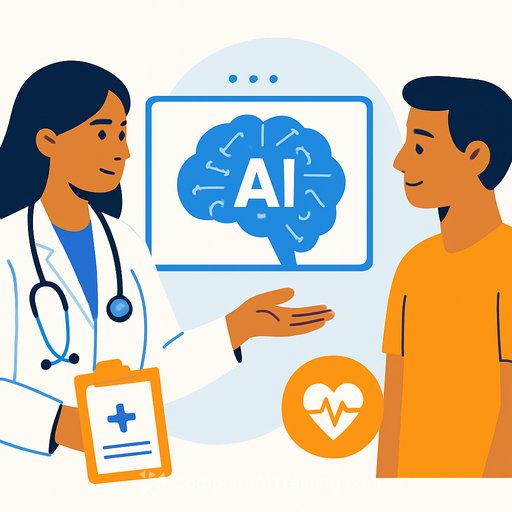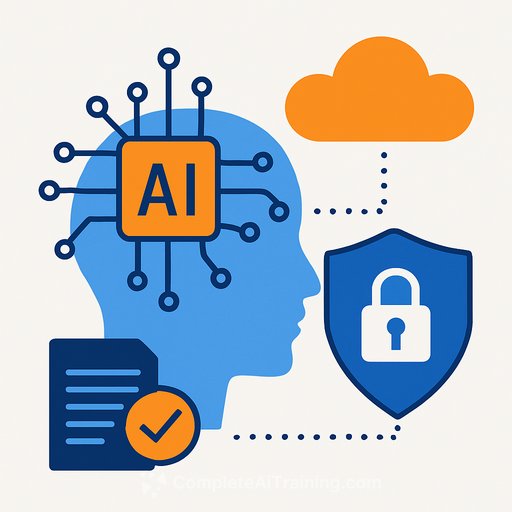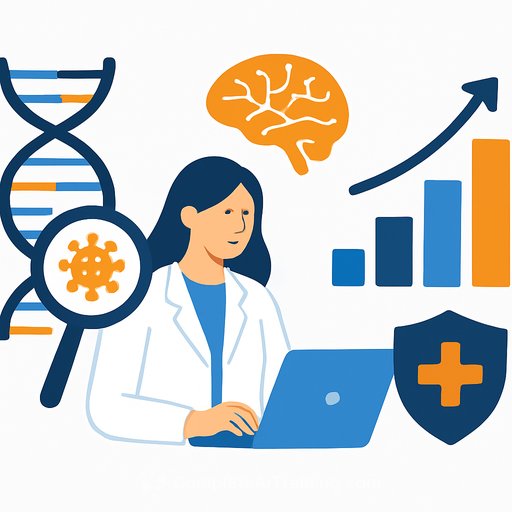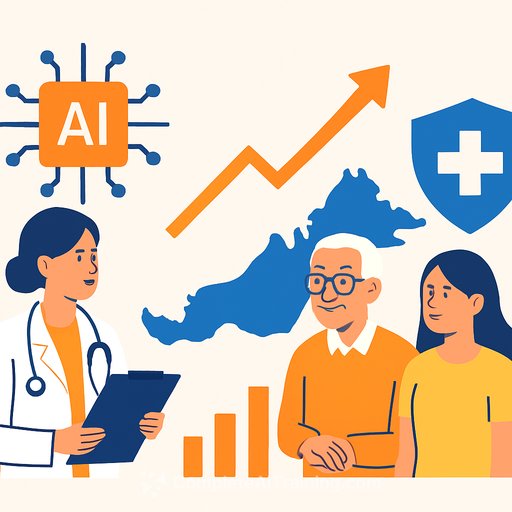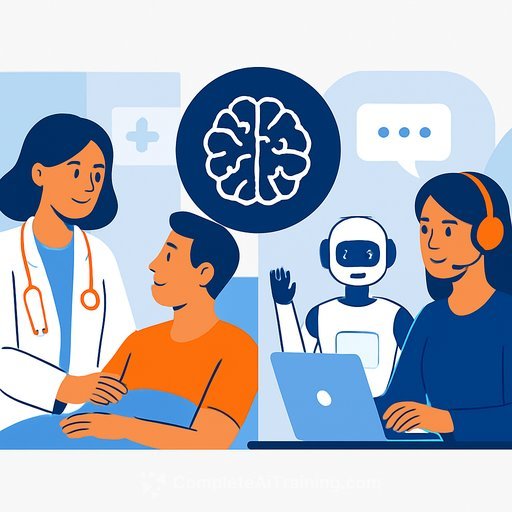AI That Eases Burnout and Lifts Care: A Practical Playbook for Healthcare Teams
Healthcare systems are stretched. Patient demand is climbing while physician turnover, staff burnout, and uneven care quality strain the floor every day.
AI won't fix everything, but it can take real weight off clinicians and operations. Think fewer clicks, faster decisions, and more time at the bedside.
Why Burnout Feeds Turnover
Heavy administrative work pulls clinicians away from patients. Documentation, prior auths, scheduling, and claims pile up and push stress higher.
Turnover rises when this becomes the norm. Teams lose experience, continuity breaks, and patient outcomes suffer.
AI as Relief: Automate the Routine, Protect the Work That Matters
NLP for documentation: Voice-to-text notes, structured summaries, and auto-generated reports can cut charting time and reduce after-hours work. Less screen time means more patient time.
RPA for admin flow: Automate data entry, appointment scheduling, and claims processing. These are predictable and rule-based-perfect for bots-so clinicians don't carry the load.
- Use case starters: intake forms, insurance eligibility checks, referral routing
- Quick win metric: minutes saved per clinician per shift
Smarter Decisions, Lower Cognitive Load
ML-driven support: AI can scan EHR data and real-time vitals to surface risks, recommend next steps, and flag gaps in care. That shortens the path from data to action.
Predictive analytics: Early warning for deterioration and complications guides timely intervention. Clinical Decision Support Systems can also call out conflicts, risks, and supporting evidence.
- Use case starters: sepsis risk scoring, readmission risk, imaging prioritization
- Quick win metric: time-to-decision and alert precision (PPV)
AI-Powered Telemedicine That Scales Care
Virtual assistants triage symptoms, gather histories, and route urgent cases to the front of the line. Clinicians see fewer low-acuity visits and focus on what truly needs them.
Remote monitoring tools track vitals and trends without routine visits. That helps rural and understaffed sites offer continuous care without overloading the schedule.
For context on clinician well-being, see the National Academy of Medicine's work on burnout and resilience: Clinician Well-Being Initiative.
Better Outcomes Through Personalization
Personalized treatment plans: AI can pull from history, lifestyle, and genetic markers to forecast likely responses and guide therapy choices. Fewer trial-and-error cycles, faster symptom control.
Chronic disease management: Continuous data feeds for diabetes, heart failure, or hypertension allow quick dose adjustments and outreach based on real risk, not guesswork.
Fewer Errors, Safer Care
Diagnostic support: In radiology, pathology, and dermatology, AI can highlight subtle findings a tired eye might miss. It's a second set of eyes, always on.
Medication safety: Systems can check allergies, interactions, renal dosing, and duplications in real time. The goal: prevent the near-miss from becoming an event.
Lean, Predictable Hospital Operations
Capacity and flow: Admission and discharge forecasts help schedule staff, beds, and transport. Over- and understaffing both drop when you can see the day ahead.
Resource allocation: ICUs, imaging, and equipment can be assigned based on real-time need, not hunches. That shortens delays and smooths throughput.
Implementation Playbook (90-Day Sprint)
- Pick 2 high-friction use cases: e.g., note drafting and sepsis alerts. Define success in numbers (minutes saved, alert PPV, LOS).
- Integrate with your EHR: Use existing APIs and keep the workflow inside the chart. Extra clicks kill adoption.
- Data and safety guardrails: Bias checks, human-in-the-loop review, audit logs, and clear fail-safes. Validate locally before scaling.
- Train the team: Short, scenario-based sessions for clinicians and admins. Measure use and feedback weekly; iterate.
- Compliance and privacy: HITRUST/ISO vendors, BAA in place, least-privilege access, PHI minimization.
What to Watch: Market Momentum
LLMs, imaging AI, and automation tools are moving from pilots to production across clinics and hospitals. Telehealth and remote monitoring remain strong, especially for chronic care.
If you're building capability in-house, you can explore practical upskilling paths here: AI courses by job.
Practical Metrics That Matter
- Documentation time per encounter and after-hours EHR time
- Alert precision and intervention-to-outcome lag
- No-show rate, triage accuracy, and virtual-to-in-person deflection
- Length of stay, boarding time, and bed turnaround
- Medication error rate and duplicate testing
- Turnover, vacancy days, and cost to backfill
Guardrails: Keep AI Clinician-Centered
AI should support judgment, not replace it. Keep decisions explainable, verify models on your population, and track drift over time.
Make it easy to override, capture clinician feedback in the workflow, and publish what the system does and doesn't do. Trust grows when people can see how it works.
The Takeaway
Start where the pain is highest: documentation, triage, and risk prediction. Deliver quick wins, measure hard outcomes, and expand from there.
Do that, and you reduce burnout, keep your best people, and give patients faster, safer care. That's the point.
For a global perspective on telehealth practice, see the WHO's resources: WHO Telehealth.
Your membership also unlocks:

